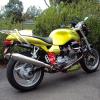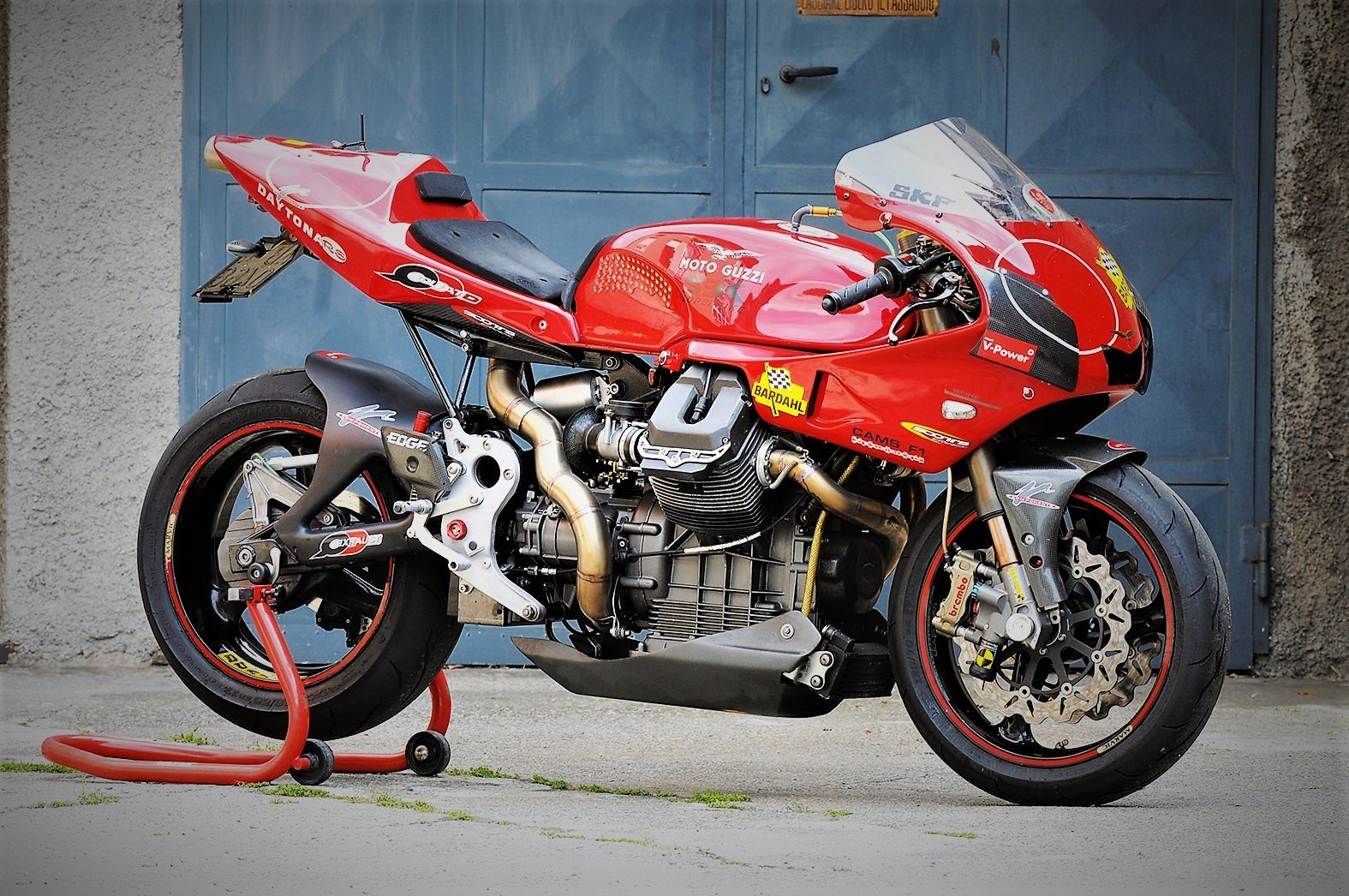-
Posts
5,223 -
Joined
-
Last visited
-
Days Won
268
Content Type
Profiles
Forums
Events
Gallery
Community Map
Everything posted by Lucky Phil
-
Maybe docc but I measured a spare crank and it may be a close thing. From memory I don't think a std deep is long enough. I bought one of these, an extra deep. https://www.australianonlinecarparts.com.au/32mm-x-1-2-dr.-extra-deep.-6pt.impact-skt-127mm-lo It's internal depth is 105mm and overall length 125mm Edit... I dont think thats long enough docc at about 93mm overall length. Ciao
-
"Unless the aircraft is unserviceable and grounded don't start the component removal process until you have the replacement part in your hand" How may times did I need to reinforce this to the aircraft mechanics I supervised. Plus the crank seal. Even if you don't change it it wont cost any extra shipping and if you damage the original during the process you'll have one on hand. Ciao
-
Do tell. Ciao
-
That's a "get you home fix docc". Ciao
-
Tank off, front subframe off, alternator cover and alternator off plus a few other bits and pieces as well as the cover itself. Honestly without the "its a 10 minute job" thing maybe you'd have it off in an hour and a half being careful. My as well change out the crank seal while you have the cover off as well. Ciao
-
Valpolini are from what I've seen a plain metal based gasket with what looks like a pressure sensitive sealant coating. I've used them on rocker covers and they are very good and far superior to the composite gaskets of any kind, silicon or otherwise. The Guzzi timing cover gasket is a similar style but a true "crimped metal" gasket with pressure sensitive sealant so the metal base has been formed to provide some spring to it which means it doesn't rely entirely on the sealant. The "spring" means it adapts to expansion and contraction very well as the engine heat cycles. It's virtually a single layer MLS head gasket in effect. It also provides a more solid layer between the two sealed components so there is not relaxing of the gasket and the securing screws maintain their tension. Cioa
-
The MG cycle gasket is better than the valpolini in my opinion. It's a Guzzi part as well. Ciao
-
Use of course the later coated metal gasket to replace it and cure the issue permanently. Ciao
-
I don't believe any production V11's came out with this gearbox bracket between the frame and the gearbox engine mount studs. It was I believe a "prototype" thing that made it to the parts manual but not "production". Early V11's had the frame mounting brackets but I don't believe any production bikes had it, certainly not the later long frame bikes with the lower fore and aft supports. Ciao
-
The squeaking doesn't bother me Pete but the clunking does Ciao
-
I've never been able to source a comprehensive TDS for any Motul oil hence I won't consider using it. If they won't divulge the details I won't use the product. The worry about conversion to full synthetic oils causing oil leaks is an old debunked story. Ciao
-
The issue is generally with "yellow metal" bearings such as rocker bushes and thrust washers but also to a degree with big end bearings as well I think docc. Any corrosion creates particle which leads to "corrosive wear". It's generally accepted that a flat tappet engines is fine with a minimum of 1000ppm but tests have shown that even 800 ppm is sufficient as a bare minimum. somewhere between 1000-1200 seems the sweet spot. Ciao
-
Corrosion to some bearing and bush material docc. Too much takes the oil in the acidic direction. Ciao
-
Not sure why the Zink level have a "range" of 1600-2000 which is more than is needed anyway. There is a limit to how much Zink is required and anything over about 1400 ppm is of no benefit and can indeed be leaning more towards a negative. A case of more isn't necessarily better. No Full Synthetic motor oil needs or should be built on a 20W base these days. This oil looks like it's aimed at the "old school" people that don't really understand modern oils and always reach for the 20W-50 because they can't change their ways. Like everything else these days there are manufacturers that are quite willing to cater for any market they think they can make a dollar out of whether the product makes any sense or not. We are living in the "too many choices, bespoke world" to an extent now. Best oil grade for a BB Guzzi. Full synthetic 10W-40/50/60 depending on climate and usage with at least 1000ppm Zink. I've run my 2 valve engine on Mobil1 0W-40 for years and the Daytona engine on Full Synth 10W-60 Penrite as it has some special needs. Ciao
-

ANSWERED OMRON G8HE-1C7T-R-DC12 DC12V or Equivalent (CIT A11CSQ12VDC1.5R?)
Lucky Phil replied to p6x's topic in Technical Topics
As a general comment and not aimed at you specifically I can't tell you how all much I lament this expression. Isn't there enough actual "trigger pulling" in the world these days not the least in the States. Ciao -
I've looked at that and the V11 drive plate isn't robust enough (too thin a section) and has a tapered face. You could machine off the original plate and weld on a heavier one and machine it to true it up I guess or machine up a whole new unit and get the splines cut. The V11 drive bore is also different to the MGS-01 unit. Ciao
-
Possibly but the earlier RAM clutch pushrod fitting typically interferes with proper clutch disengagement when used with the later thicker friction plates. I also suspect the reason for the reduced life of the earlier RAM clutch plates was that these units were originally designed for a cable operated system that had greater travel than the hydraulic system and the slipping was caused by the slave bottoming out as the friction plate wore as opposed to high wear of the friction plate itself. The plate still had plenty of material on it. Just my theory. The design of the single plate pivoting fingers as opposed to the straight push coil spring system and the spreading of wear over 2 plates instead of one requires a greater amount of clutch actuation range to accommodate wear. Ciao
-
two things, the thicker clutch plate may require a mod like this https://www.mgcycle.com/index.php?main_page=product_info&products_id=3117 and a longer pushrod. Ciao
-
I didn't want to get into "pumping losses" and drain back speeds etc. Honda RC30's when they first started racing them were destroying big end bearings because the oil pumped into the heads couldn't drain back to the sump fast enough so the oil level dropped enough to cause cavitation. Robert Dunlops bike in the pits at the WSB round back in 88 or so had extra external drain back lines from the head to the Crankcase but I think the real fix was to reduce the qty pumped there to start with. Honda had excess oil going to the heads so they fitted restrictors in the end I think. Ciao
-
Probably because it's a more indicative indication of the level when running as opposed to the level when every last bit of oil possible has drained back to the sump which is not really the case in operation. Could also be because for long journeys and top offs the engine is more likely to be warm when oil is added, who really knows they are Italian and I doubt there's really that much thought or science involved along with the typical translation vagaries. It's of little consequence whichever way you do it really. Might reflect a few hundred ML of difference. Not sure the differential expansion between mineral and synthetic has anything to do with it as I doubt there's any real difference between the two anyway. If anything I would have thought it would be the other way around with the Mineral oil relying on Viscosity Index Improvers that expand as the oil temp rises unlike Synthetic oil which doesn't need them. Ciao
-
Sounds like my brush cutter to me docc. Ciao
-
Sorry but you and I are on different planets with regards to what sounds good. That Video is bordering on obscene on several levels. Ciao
-
No. Ciao
-
True, generally through the right handlebar at around 3800 rpm. Ciao
-
I've owned both the RC30 and the 851 with the reverse cone megaphones. They were way to loud for the road though and I ended up with a full alloy can SP2 system on it. The RC30 sounded nice at WOT mostly due to intake noise. If you've ever heard a WSB RC30 running in the pits without the backlash gears fitted to the cam drive gears which is how they were run back in the late 80's you'd be shocked at the mechanical racket once they got warmed up. Ciao





